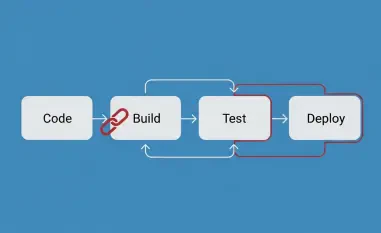Cybercrime has evolved from isolated incidents of financial theft to a complex web of activities that often intertwine with state-backed cyber operations. This convergence poses significant challenges for national security, necessitating a reevaluation of how we address and mitigate these threats. As cybercrime and state-sponsored cyber activity grow more interconnected, understanding their implications and developing effective strategies becomes crucial for protecting national and global security. The following sections explore these intertwined threats and the strategic responses necessary to handle them.
The Intertwined Nature of Cybercrime and State-backed Cyber Activity
Blurring the Lines Between Criminal and Political Motivations
The distinction between financially motivated cybercriminals and state-backed cyber adversaries is increasingly difficult to discern. Adversarial nations frequently co-opt criminals for state activities, blurring the lines between criminal and political motivations for cyberattacks. For instance, the activities of Sandworm (APT44), linked to Russian military intelligence (GRU), involved utilizing malware from cybercrime communities for purposes of espionage and disruption. These activities illustrate the convergence of criminal methods with state-backed objectives, complicating the detection and classification of cyber threats.
The reality is that many adversarial nations purchase criminal capabilities to further state goals, combining political motivations with criminal expertise. Cybercriminals offer tools and infrastructure that can be repurposed for state agendas, making their services invaluable to state operations. This blurring of lines between criminal and political motivations is not limited to Russia but is evident in the activities of countries like Iran and North Korea as well. Therefore, addressing these threats requires an understanding that the actors involved may not fit neatly into categories of purely criminal or purely state-sanctioned.
Examples of Intermingling
Iran and North Korea provide further examples where state-backed operatives conduct financially motivated crimes to finance their regimes. North Korea’s cyber activities, notably, demonstrate a blend of cyber espionage and financially motivated cryptocurrency theft. This dual nature allows them to profit financially while also engaging in intelligence operations. Iran, similarly, has been involved in cyber operations that intertwine with the intentions of its cybercriminal elements, illustrating the widespread nature of this intermingling.
These cases highlight the complex relationship between state-backed and criminal cyber activities, making it challenging to address them as separate threats. By utilizing the resources and expertise of cybercriminals, states can enhance their operational capabilities without direct attribution, mitigating the risk of international backlash. The activities of state actors borrowing techniques and networks from cybercriminals create a bonding agent that melds state-sponsored initiatives with criminal enterprises. As shown in the 2016 Democratic National Committee hack, Russia used crime marketplaces’ malware, tools, and manpower to advance its espionage goals, blending efforts seamlessly while retaining plausible deniability.
Implications for National Security
Recognizing Cybercrime as a National Security Threat
Given the intertwined nature of cybercrime and state-backed cyber activity, financially motivated cybercriminal activity should be recognized as a national security threat. This recognition is crucial for developing effective strategies to combat these threats. Treating them with the urgency afforded to state-backed hacking groups is necessary to understand their scale and the potential damage modern cyber practices can unleash. For example, criminal ransomware attacks often resemble state-backed wiper attacks in terms of their severity and impact, highlighting the necessity for a unified approach.
Adopting a broader perspective on cyber threats involves identifying and addressing vulnerabilities that can be exploited by both cybercriminals and state actors. This means that infrastructure and policy responses need to be designed with the understanding that these groups are not mutually exclusive and may collaborate to achieve broader goals. Recognizing financially motivated cybercrime as a national security threat can help allocate resources and attention to counteract activities with potentially devastating impacts, ensuring comprehensive defense measures are established.
The Role of Deniability in Cyber Conflict
Adversarial states leverage cybercriminal tools and manpower to increase their capabilities while maintaining plausible deniability. This strategy is crucial to avoid triggering full-scale cyberwar. By using cybercriminal networks, states can distance themselves from direct attribution, making it difficult for affected nations to justify strong retaliatory measures. Deniability is of utmost importance during peacetime to prevent cycles of escalating cyber attacks leading to kinetic conflict. However, in ongoing kinetic conflicts, such as the situation in Ukraine, the necessity for deniability decreases, resulting in more overt use of cybercriminal tools.
For instance, during recent conflicts, APT44 deployed Prestige ransomware against logistics entities in Poland and Ukraine, utilizing known cybercriminal operations for state purposes more openly. The reduced caution in such scenarios demonstrates how states calibrate their cyber operations in response to wider geopolitical dynamics. Understanding how deniability shapes the use of cyber operations can inform policy and strategy, ensuring that prepared responses anticipate shifts from covert to overt cyber actions based on the broader context of a conflict.
Strategic Responses to Cybercrime as a National Security Threat
Elevating Cybercrime as a National Security Priority
Policymakers must prioritize intelligence collection and analysis on cybercriminal organizations. Enhancing law enforcement capacities to investigate and prosecute cybercrime is essential for effective responses. This approach requires a shift in perspective, connecting cybercriminal activity to national security and treating it with the same urgency as state-backed hacking groups. Investment in the necessary tools and training for law enforcement agencies can help bridge gaps in existing capabilities and prioritize this multifaceted threat.
Traditional law enforcement practices must be augmented with specialized cyber techniques to pursue not only the prosecution but also the disruption of ongoing criminal activities. Collaborative efforts among agencies, leveraging intelligence-sharing platforms and public-private partnerships, can ensure that actions taken against cybercriminals account for their complex connections to state actors. Focusing on the eradication of criminal activities that support state-level strategies is therefore essential to mitigate risks.
Strengthening Cybersecurity Defenses
Investment in research and development for new security technologies is crucial. This effort includes creating incentives for adopting best practices to improve resilience against cyber threats. Strengthening cybersecurity defenses involves a comprehensive approach, which must incorporate promoting cybersecurity awareness and education. Policies to encourage innovation in security measures, alongside dissemination of effective practices, can help create robust national defenses and enhance operational resilience in both public and private sectors.
Adoption of proactive security frameworks and consistent updates to infrastructure are necessary to address emerging threats. Encouraging organizations to adopt multifactor authentication, regular patching, and routine threat assessments are practical steps to reinforce defenses. Government and industry partnerships in cybersecurity initiatives can lead to shared knowledge and quicker dissemination of effective solutions. By bolstering defenses with a forward-thinking approach, the impacts of cybercrime and state-sanctioned cyber activities can be mitigated, providing a bulwark against sophisticated cyber threats.
Disruption of the Cybercrime Ecosystem
Targeting key enablers like malware developers, bulletproof hosting providers, and financial intermediaries is vital in disrupting the infrastructure supporting cybercriminal operations. Coordinated efforts from law enforcement and intelligence agencies are essential in dismantling these networks. Identifying and neutralizing the operational nodes that cybercriminals rely on can significantly diminish their capabilities, reducing their potential impact on national security.
Operations can range from digital infiltration to physical raids, with a focus on disabling the technological as well as financial backbones sustaining criminal activities. International cooperation will be instrumental in targeting cross-border elements of cybercriminal operations, making it more difficult for these networks to adapt and survive in the face of coordinated shutdowns. By systematically dismantling the cybercrime ecosystem, a proactive approach can be taken, reducing the threat before it matures into more severe state-supported operations.
Enhancing International Cooperation
Developing International Frameworks
International cooperation is essential for addressing the global nature of cybercrime. Developing frameworks for information sharing, joint investigations, and coordinated takedowns of cybercriminal networks will bolster global efforts against cyber threats. An approach that ensures all cooperating entities work within a unified strategy can create powerful responses against the interconnected nature of both cybercrime and state-sponsored activities. Sharing intelligence and strategies between nations will streamline operations and enable quick responses to emergent threats.
Establishing comprehensive treaties and agreements focused on cyber defense can provide a standardized operating procedure in dealing with international threats. These frameworks allow for the synchronized use of resources and capabilities, ensuring that actions taken are legal, coordinated, and effective. Building trust among international partners and fostering an environment of transparency are crucial steps for the success of these cooperative efforts.
Empowering Individuals and Businesses
Promoting cybersecurity awareness and education is crucial for empowering individuals and businesses. Enhanced understanding of threats and preventive measures can create a more resilient frontline defense. Legislative support is necessary for service providers to act decisively against cybercriminals and assist victims in reporting and recovery efforts. Providing resources for education and clear channels for individuals and businesses to report cyber incidents will ensure a synchronized community effort against threats.
Effective public awareness campaigns and educational programs in schools and workplaces ensure that cybersecurity becomes a critical component of daily practice. Ensuring that resources are accessible for both the prevention and the aftermath of cyber incidents will fortify individual and organizational resilience. The role of service providers in these efforts, particularly through clear legislative support for their actions, can lead to stronger, more reliable defense and response mechanisms.
Encouraging Strong Private Sector Practices
Adoption of Proven Technologies
Encouraging the adoption of proven technologies can significantly enhance security defenses in the private sector. Discouraging overreliance on single solutions ensures a more adaptable and resilient cybersecurity posture. The private sector plays a crucial role in maintaining strong defenses and collaborating with government agencies to adopt effective security measures. By leveraging a combination of advanced technologies and diverse security solutions, companies can better anticipate and respond to the complex threat landscape.
Organizations should embrace a layered security approach, incorporating tools and technologies that have demonstrated effectiveness in mitigating risks. Regular security assessments and updates ensure that defenses remain robust against evolving threats. Creating a culture of continuous improvement in cybersecurity practices will empower private sector entities to act proactively rather than reactively, fortifying their operations against potential cyber-attacks while contributing to overall national security resilience.
Legislative and Policy Support
Cybercrime has evolved dramatically from mere financial theft into a sophisticated network of activities that often intersect with state-backed cyber operations. This merging of cybercrime and state-sponsored activities creates significant challenges for national security, forcing a reevaluation of strategies to mitigate these threats. As these cyber threats grow increasingly intertwined, it becomes essential to understand their implications and develop effective countermeasures. The convergence of these threats requires us to explore and implement comprehensive responses that enhance both national and global security. By examining the interconnected nature of cybercrime and state-sponsored cyber activities, we can better devise strategies to protect critical infrastructure, sensitive information, and overall national interests. Furthermore, it is crucial to foster international cooperation to tackle these issues, as cyber threats know no borders. The following sections delve into these complex threats and discuss the strategic responses necessary to manage and mitigate them effectively for the sake of global security.













